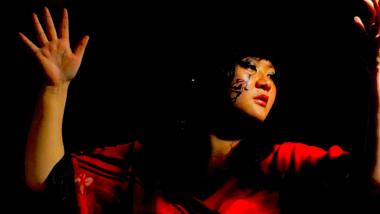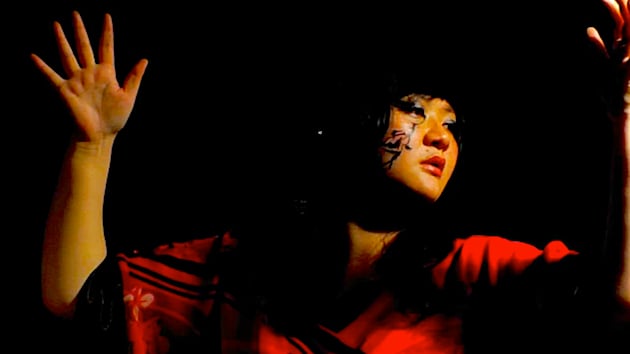
In September 2014, the composer Paola Prestini announced a new record label, VIA, as an offshoot of her Vision Into Art production company. It was meant to produce mostly new-music recordings, and its first releases included Anna Clyne’s The Violin, Prestini’s first opera, Oceanic Verses, and a new-music recital by Jeffrey Zeigler, the Kronos Quartet’s cellist from 2005 through 2013 (and also Prestini’s husband). Since then, VIA has released a small but varied catalogue, with entries from Sxip Shirey and Oracle Hysterical, Maya Beiser, Tim Fain, Cornelius Dufallo, and Ian David Rosenbaum, as well as an early music soundtrack disc (Tudor music from a PBS production, Wolf Hall).
A year after she launched VIA, Prestini opened National Sawdust, a Brooklyn multimedia arts center that has become an increasingly important part of the new-music landscape. Among the center’s facilities is a recording studio, and while VIA remained the house label, it seemed only natural to rebrand it, making the link to National Sawdust clearer. So at the start of April, National Sawdust Tracks was launched, with Zeigler as its director, and the VIA recordings as its instant back catalogue.
Du Yun: Angel’s Bone
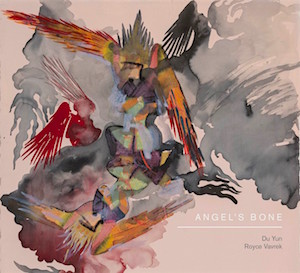
Among other things, Angel’s Bone offers a logical, if unsettling response to a perennial question, heard nonstop among those who either love or hate classical music and opera: Can classical music be relevant to today’s world? With Angel’s Bone, Du shows that it can — all composers need to do is write works that examine some of the real world’s grittier problems. Her own choice of subject here is human trafficking and sexual slavery, particularly among children — problems that we may prefer to associate with parts of the developing world, but which, Du notes, are commonplace, if better hidden, in the West, including the United States.
Du and Vavrek make that point with a blend of the exotic and the commonplace, reflected equally in the libretto and the score. The opera presents the subject unsparingly, through only the thinnest scrim of fantasy. A suburban couple, Mr. and Mrs. X. E., bored and unhappy with their lives and each other, discover Boy Angel and Girl Angel, who had fallen out of the heavens and crashed into their backyard.
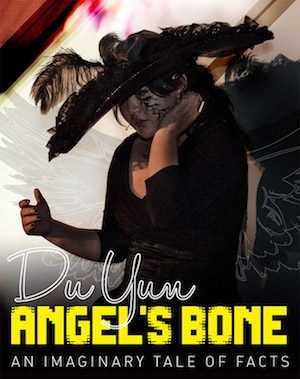
Moving quickly from an odd sort of religious delusion — Mr. X.E. proposes that the angels are God’s reward for the couple’s years of struggle; Mrs. X.E. likens herself to the Virgin at the Annunciation — to outright opportunism, Mrs. X.E. sees the angels as the answer to her problems. Keeping them captive in a clawfoot bathtub, she goads her husband into pruning their feathers, and begins pimping them out to the neighbors.
Mr. X.E. eventually thinks better of this, and liberates the angels and begs their forgiveness, before stabbing himself in the heart. Mrs. X.E., however, is thoroughly unreconstructed. Pregnant with Boy Angel’s child, she reinvents herself as a victim (her husband forced her to do it, she says) and becomes a media celebrity.
Du, who was born in Shanghai and is now based in New York, where she is artistic director of the MATA Festival, is an omnivorously eclectic composer who sees little point in genre boundaries. My first encounter with her work, about a decade ago, was hearing the Juilliard Ensemble play Vicissitudes No. 3 (2003), an overtly modernist scored inspired by the poetry of Wang Dan, a leader of the protest movement at Tiananmen Square. But just a few days later, I heard her leading a jazz-rock band, performing her scores for a handful of turn-of-the-(20th)-century silent films by Alice Guy Blaché. In subsequent concerts, she presented works in which she sang, played keyboards and percussion, and coaxed electronic sounds from a laptop and other devices.
With a composer as freewheeling as Du, you never know exactly what to expect, even in broad terms, but there is always a firm link between the sounds she chooses and the subjects she addresses.
In Angel’s Bone, Du’s style choices and juxtapositions give real emotional substance to both the surfaces and undercurrents of Vavrek’s text. She begins the work, for example, with a Renaissance liturgical sound that evokes the work’s fantasy element — we’re talking about angels here (or are we?) — and foreshadows the religious spin the X.E.s put on their find. That neo-Renaissance pastiche returns in later scenes, where it is mixed with a more nebulous, electronic timbre, in a blend that suggests otherworldliness and mystery, without rooting that atmosphere in any specific aural imagery.
Elsewhere in the score, the sound world is light years away from this serenity. Brisk, busy, and at times chaotic jazz-tinged figures weave a fabric that sounds like an amalgam of Frank Zappa at his most experimental and the jazz avant-gardist Sun Ra. Percussion writing with a ritualistic tinge plays a crucial role as well.
The Choir of Trinity Wall Street and the new-music chamber orchestra Novus NY, move expertly through these disparate levels, under Julian Wachner’s baton. So do the cast’s four singers, whose roles are partly spoken, partly sung. Abigail Fischer does a superb job of creating Mrs. X.E.’s path from bitterness, boredom and disappointment to celebratory self-justification, and Kyle Pfortmiller captures Mr. X.E.’s disappointment and marital alienation, his attempt to be the more reasonable of the pair in his dealings with the angels (he’s the good pimp), and his eventual qualms and guilt.
As the angels, Kyle Bielfield and Jennifer Charles project a confused innocence at first, but that quickly unravels as the score moves toward its harrowing centerpiece, Girl Angel’s tortured “Brick J.” – a wrenching, graphic Sprechtstimme aria about a client who “likes it rough.” And what follows this chilling scene? Another neo-Renaissance choral section.
Angel’s Bone is, obviously, not an easy work to grapple with, and you probably want to put some space between hearings. But as Du’s Pulitzer recognition acknowledged, it’s an important and provocative statement that should be heard — as well as a good introduction to Du’s work. (For another side of her composing persona, check out Shark In You, her 2011 debut disc, on the New Focus label.)
Andy Akiho: The War Below
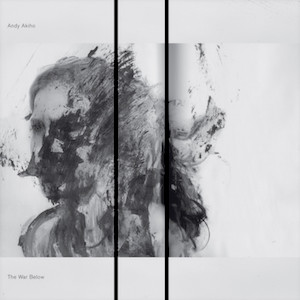
Actually, “piano quintet,” while a technically correct description of the performing forces at hand, may be too traditional an appellation for Akiho’s piece. Whatever you might say about how instruments are meant to be equals in chamber music, many of the classic piano quintets (and quartets) are just a hair’s breadth from being scaled-down piano concertos. That can be said of only one of this work’s five movements — the fourth, “Palindromic Queue,” in which Chai holds the spotlight with a lush, meditative piano line.
Elsewhere, the piano may peek through with a swirling figure here, or ear-catching, percussive timbres there, but mostly it is part of a restlessly shifting, colorful texture that Akiho constantly refocuses. Individual strings grab the attention equally over the course of the work, but you quickly find yourself focusing less on specific lines and more on the work’s morphing tempos, textures, and atmosphere. The lasting impression you’re left with is of a unified ensemble, functioning like a high-precision machine.
Akiho’s palette in the album’s second work, Septet (2014) — not only his instrumentation, but his notions of harmonic change, textural juxtaposition and shifting densities — is strikingly different. Akiho plays steel pans here, in an ensemble that includes the pianist Vicky Chow, the percussionist Ian David Rosenbaum, and string players from The Knights. The steel pans naturally call attention to themselves for their peculiar timbre — in this context, they sound like a metallic, slightly mistuned keyboard — but Akiho keeps the more standard instruments sounding odd as well.
The strings, for example, are often bowed hard, creating a textured crunch or, at times, a rubbery tone, like a pair of balloons being scraped against each other, and the piano sometimes offers brief, pointillistic comments from within a sustained, slowly changing drone. And rhythmically vital sections scored for percussion and steel pans call to mind elements of traditional Chinese processional music. It’s an extraordinary wonderland, with no lack of themes and textures to catch the attention, and a seemingly endless procession of influences — even, surprisingly in this context, a touch of Coplandesque string writing near the end of the first movement.
Subtle Degrees: A Dance That Empties
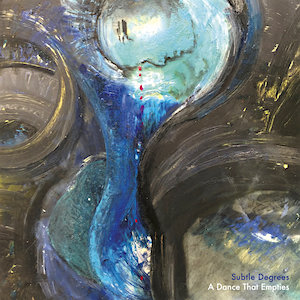
Its releases have been consistently first-rate and excitingly fresh; I haven’t run into one that I’ve wanted to shelve without a second (or third, or fourth) hearing. But the growing New Amsterdam catalogue is a forceful argument for the scuttling of genre distinctions. The music is unquestionably classical, in the sense that that outmoded term suggests a certain level of structural, harmonic, and rhythmic ambition. But the label’s founders recognize that those ambitions exist in jazz and rock as well, and if some of the composers use jazz and rock instrumentation and techniques, so be it. If you want to slap a label on the music, be their guest, but New Amsterdam won’t do that for you.
A case in point is A Dance That Empties, the recent release by the composer and saxophonist Travis Laplante and the drummer Gerald Cleaver, working together under the name Subtle Degrees. There are enough saxophonists giving overtly classical new-music recitals, and enough classical percussionists including trap-sets in their arsenals that the instrumentation should not, in itself, lead you to think of A Dance That Empties as a jazz disc, although no doubt some will, and those who do can point to passages where where Laplante’s harmonic explorations call to mind the work of Ornette Coleman and John Coltrane.
To me, it’s a three-movement, 42-minute work that covers enormous ground, rhythmically and harmonically, and along the way, showcases Laplante’s vivid musical imagination and incredible facility with extended techniques. The piece begins with a quiet, sustained multiphonic chord, offered as a sort of prelude, a cloud of sound from which the work’s themes will burst forth. The rest of the first movement is a set of variations on a lyrical theme, with Cleaver filling in pauses and providing an almost contrapuntal underpinning to Laplante’s increasingly lengthy and florid expansions.
But the opening movement doesn’t quite prepare you for the rest of the work, an astonishing exploration of circular breathing. The second movement is a continuous, forceful line, fast and loud, and in an arpeggiated style that, at the speed Laplante plays, and with his frequent alterations of bass and middle range notes, creates the illusion of independent contrapuntal lines. The finale, also rooted in circular breathing, begins as insistently as the second movement, but relents toward the end, embracing the lyricism of the opening movement, and building toward a sustained, siren-like, high-pitched wail.
You might suspect some studio trickery here, particularly in the second movement, where the movement of independent strands of counterpoint seem too involved for a single saxophonist to play. But I’ve heard Subtle Degrees play this piece in concert, and both the continuous line and the implied counterpoint were there in all their glory.

